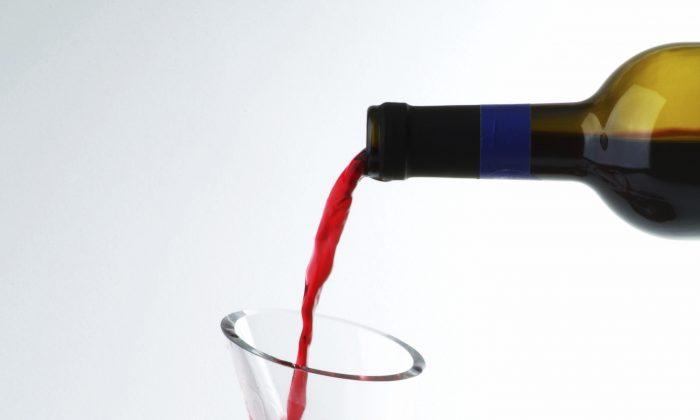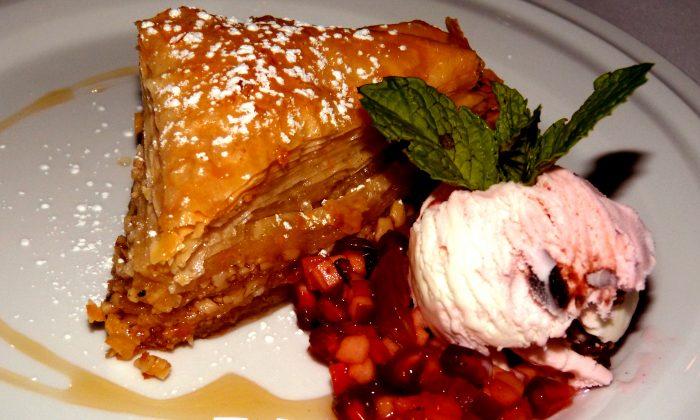To decant … or not to decant. That is the question.
In recent years, at many of the better restaurants, the sommelier or wine steward will decant that is, slowly transfer your still wine selection, especially the big reds, from the bottle you selected, to a large, wide-bottomed crystal or glass carafe to let it breathe for 20 or so minutes before pouring you a glass.
Wine decanting has been seen as pompous, and may sound silly—how can pouring wine from one container into another make it taste better?—yet it works. It is a practice that truly enhances the wine drinking experience.
Originally, wine was decanted to remove sediment from older vintages. Wines aged in bottles threw sediment after perhaps 10 years. Not only was this sediment displeasing to the eye, it could also be quite unpleasant in the mouth. Nowadays, because of better fining and filtering methods, and because wines are drunk relatively younger, even the very big reds of Spain, France, and Italy rarely throw off sediment. Decanting is performed to aerate the wine, vaporize some of the alcohol, soften the hard tannins, enhance the aromatics, and bring forth the wine’s depth and complexity.
Don’t let anybody tell you that you should only decant certain types of wine (Bordeaux) and not others (Burgundy). I recommend decanting everything. I’m one of those who insists on decanting reds, especially older reds.
A couple of days before I plan to open a big, tannic red, I stand it upright on the off chance that sediment has formed. I open the bottle a day in advance, and then decant it the morning before dinner. I have a number of vessels, crystal decanters and glass carafes—gifts from friends and associates—and take full advantage of decanting. I do not discard the original bottle after decanting, unless I believe that none of the decanted wine will remain after the meal. I rinse the bottle with cold water and the next morning, should there be any leftover, I pour it back to be used in cooking.
Wine professionals think that the best decanter has a long neck and a wide bottom surface. These features permit oxygen to reach the wine for a smoother, mellower finish. A clear, crystal decanter allows you to see the wine at its best. Be sure that the decanter is spotless and free from any musty odors. Never clean your decanter with detergent, because the shape of a decanter makes it very difficult to get the soapy residue out.
If the wine is very mature (over 15 years), take great caution when uncorking. The cork may be very brittle, causing it to split or break. If you’ve properly stored your bottle in a dark, cool cellar, you would be probably fine, but it is not guaranteed, as the quality of cork has decreased due to the vast demand from increased wine production.
For these older bottles, instead of a standard corkscrew, I personally use an AhSo cork remover. It is a two-bladed implement that when inserted in the neck of a bottle, grips the cork from the sides, and insures that even a brittle cork can be twisted and removed intact.
I find that Italian reds, Barolos, Brolios, Chiantis, Barbarescos, and the better sangiovese-based bottles, such as Brunello, benefit from judicious aeration; and so do most of the Spanish Riojas. Chilean cabernet sauvignon and carmenère also benefit from decanting, and of course the Bordeaux, Burgundy, Catalan garnachas, California and Oregon pinot noirs.
Even white wines, especially chardonnay and sauvignon blanc, will usually benefit from decanting, which enhances the fruit aromas.
So, when in doubt, decant … decant … decant.
Manos Angelakis is a well-known wine and food critic based in the New York City area. He has been certified as a Tuscan wine master, by the Tuscan Wine Masters Academy, as well as being an expert on Greek, Chilean, and Brazilian wines. He judges numerous wine competitions each year and is the senior food and wine writer for LuxuryWeb Magazine and The Oenophile Blog.



